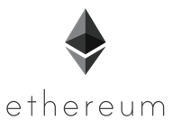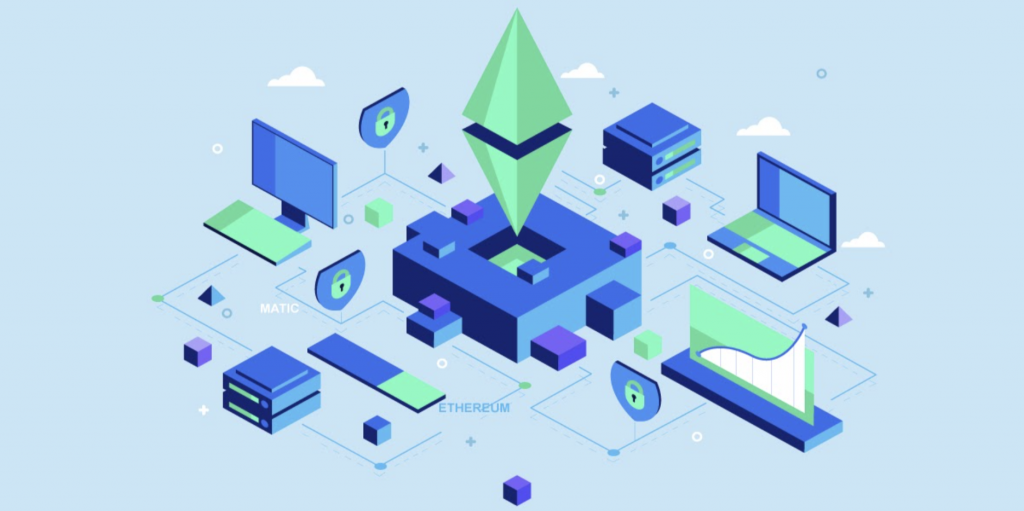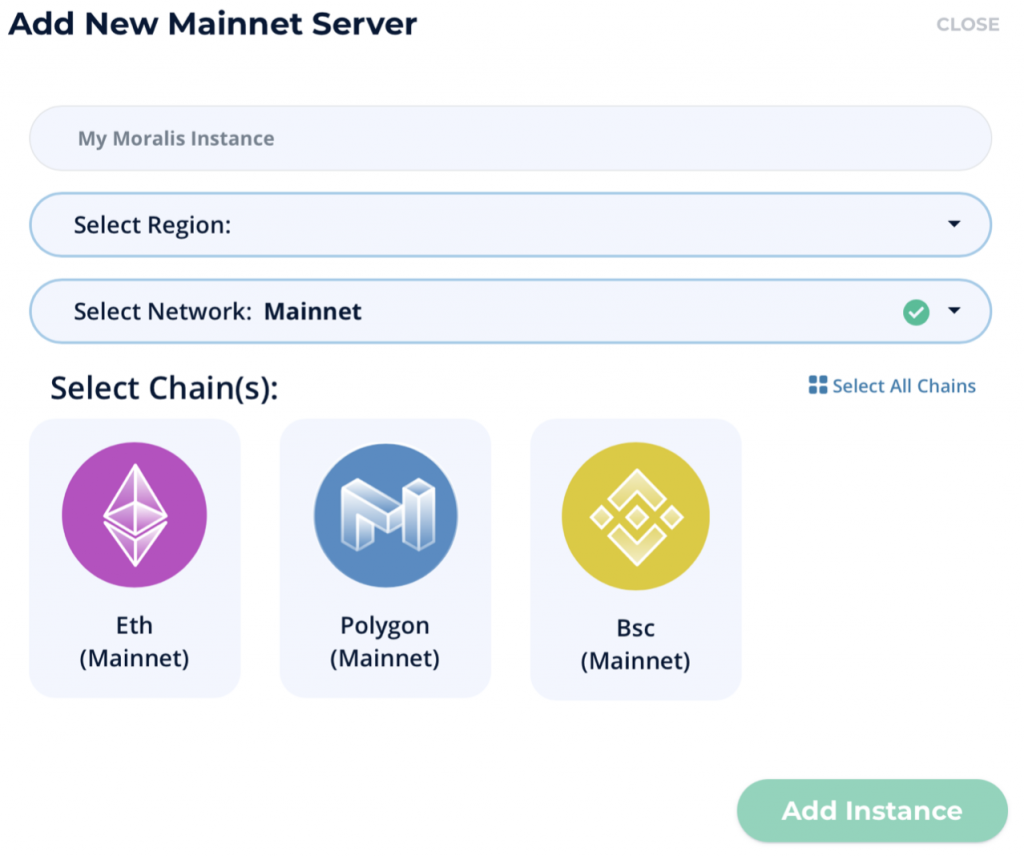The advent of Web3 apps and dApps (decentralized applications) represents a massive paradigm shift towards a more capable web. However, the ongoing shift to a decentralized web, dApps, and Web3 apps is not without its challenges. Traditionally, developing applications for Web2 has been far more accessible than Web3/dApp development. However, as Web3 and blockchain apps grow increasingly commonplace, more developer-friendly environments for building Web3 apps are emerging – one of which is Moralis. Although Web3 can seem overwhelming, with its many different blockchains to choose from, the most prominent development blockchain is Ethereum. As such, this article will focus on how Moralis makes Web3 development easy, and how to build ETH dApps with Moralis.
If you are interested in dApp development, the easiest way to get started is with Moralis. Moralis is the blockchain middleware that makes dApp development a breeze. Moralis allows you to massively shorten the development process, and makes building dApps more developer-friendly. Consequently, this means that we can shorten the time to market for building dApps. As Moralis is the best way to construct Web3 applications, we will take a closer look at how to build ETH dApps with Moralis.
So, what exactly makes building with Moralis so easy? Well, Moralis enables you to create serverless dApps with a fully managed backend infrastructure. This helps developers save money, time and increases engagement/growth. Furthermore, the platform provides users with everything needed for quickly prototyping and deploying dApps. This means that Moralis can offer a great Web3 development experience, and makes it the ideal choice when you are going to build your ETH dApp. In addition to this, you get all these benefits by signing up with Moralis for free!
What is Ethereum?
Before diving deeper into how to build ETH dApps, a good idea is to start off with understanding Ethereum properly. Consequently, we’ll take this section to examine the basics of Ethereum and get an overview of the blockchain.
Ethereum is the second-largest cryptocurrency, just behind Bitcoin. However, Ethereum is the number one blockchain when it comes to Web3 and dApp development. What’s more, the Ethereum ecosystem is already vast, since there are thousands of applications powered by the ETH network.

Block validation in the Ethereum chain occurs through a Proof-of-Work (PoW) consensus mechanism. This means that validators essentially race to find the correct hash through a trial and error process. If they “win the race” they are provided with the right to validate blocks. However, as development on the Ethereum blockchain gains momentum, the network is experiencing congested networks. One of the reasons for this is the PoW consensus mechanism. To solve this, Ethereum will change from PoW to PoS (Proof-of-Stake) with the launch of Ethereum 2.0.
Ethereum Use Cases
Here are just some of the use cases for Ethereum and some of the issues that Ethereum dApps can solve:
- Censorship — One of the common goals of decentralization is to eliminate the possibility of censorship. As the Ethereum network isn’t controlled by one entity, no government or company can decide what is censored and if a transaction is valid.
- Banking — Access to financial tools is essential for people to grow their economy through, for example, investments. However, a large proportion of the population does not have access to financial tools since the infrastructure is underdeveloped. Ethereum changes this through DeFi and a growing ecosystem.
- Eliminating intermediaries — Another important goal of decentralization is to eliminate intermediaries and facilitate a system where people make transactions directly from person to person. Ethereum does precisely this since it is a P2P (peer-to-peer) network. Consequently, this means that intermediaries can be cut out of the proocess. To replace the intermediaries, smart contracts were developed which can handle the process at a fraction of the cost.
- Privacy — A significant and current issue is the privacy of Web2. People are in no control of their data, something blockchain technology can solve. Ethereum, as an example, does not require personal information when using Ethereum applications. This means that this is the right solution for giving people back control of their data.
However, suppose you want to read more about Ethereum, then we recommend their official website for more information about the network and the technology behind the platform.
Web3 Development
There are three main components of any dApp development. For a fully functioning dApp, you will need to have a UI, smart contract, and a backend. For someone familiar with programming, the UI part of the application remains similar to what they are used to. However, the backend can be somewhat tricky. This means that, traditionally, dApp development has had some issues, but they are solvable.

When it comes to frontend dApp development, it doesn’t deviate much from traditional application development. The same principles apply, and almost the same skills are required. Furthermore, the interfaces of dApps are usually webpages meaning that developers need to have mastered HTML, CSS, and, of course, JavaScript. However, for dApp development, you will also need Web3.js and knowledge on how to use this library.
Instead, the problem with dApp development lies with the backend development. Many things are different from Web2 development, and not many people know how to develop a backend for dApps. The process is time-consuming and requires a lot of resources. As a result, Moralis was designed to solve these issues with the backend development.
Moralis takes care of all the under-the-hood backend infrastructure, meaning developers familiar with Web2 development can quickly start developing apps for Web3. Moralis enables you to build serverless dApps, and you can get going in just a couple of minutes. This means that the platform takes care of the complicated Web3 backend stuff, which leaves you to focus on what’s really important; the frontend development.
Moralis Explained
When developing ETH dApps, the best tool that you can utilize is Moralis. Moralis will make the development process more efficient and as comfortable as possible. In these previous sections, we have gone through some of the main benefits of Moralis. However, we will take this part of the article to go through some of the services provided by Moralis.

Moralis allows you to build serverless dApps and provides you with infinitely scalable backend infrastructure. As a result, you can focus on frontend development to create a great user experience for your dApp.
This further means that Moralis will take care of all the ”plumbing” or the complex backend development. This will allow you to save time and resources, which will make the development process a blast. Along with the backend, Moralis also provides its users with other useful tools that you can utilize when developing your applications.
One excellentt service that all Moralis users can use are Speedy Nodes. These are fast, reliable, and easily accessed nodes that can be helpful when it comes to development. Moralis offers Speedy Nodes for several different networks, one of which is Ethereum. This means that you can use these nodes when building ETH dApps.
If you are interested in acquiring such a node, we recommend the following article, which is a breakdown of how to connect to Ethereum nodes. Furthermore, Moralis offers more tools, such as native support for IPFS, MetaMask, the Moralis NFT API, cross-chain compatibility, real-time alerts, and much more. If this is something that might interest you as a developer, then do not hesitate to sign up with Moralis today!
How to Build ETH dApps quickly with Moralis
Now that we know what both dApp development and Moralis is, we can take a closer look at how to build ETH dApps with Moralis. As we have gone through what Moralis offers and brings to the market, the natural choice here is to use Moralis as an example of how you can develop these applications.
Building ETH dApps, or any dApps for that matter, is as simple as it gets with Moralis. Moralis helps with getting started, and the process consists of three main steps you need to go through to get your dApp going. These three steps are: 1) setting up a server, 2) installing the Moralis SDK (Software Development Kit), and 3) initializing Moralis. Furthermore, as we are using Moralis as the framework for this example, we urge you to create an account and sign in.
How to Build ETH dApps — The Setup Process
- The first step for building an ETH dApp is to set up a server with Moralis. Setting up a server is easy, and to initiate the process, we will press the ”+Create a new App” button at the top right of your screen.
Pressing this button will provide you with a dropdown menu with three choices of what server you would like to initiate. Picking either of the alternatives will present us with a window where we can input a name, select a region and a network. As Moralis supports the synchronization of transactions between several chains, we can choose more than one network in this step. As we are looking closer at how to build ETH dApps, we should preferably include Ethereum.
 Once we are done with our choices, we can hit the ”Add Instance” button at the bottom of our screens to create our server. However, finalizing the server takes a few minutes. But worry not; the server will be up and running shortly.
Once we are done with our choices, we can hit the ”Add Instance” button at the bottom of our screens to create our server. However, finalizing the server takes a few minutes. But worry not; the server will be up and running shortly. - The next thing that we want to do is to install the Moralis SDK. It is possible to install the SDK in several ways, but the faster one is implementing the kit through CDN. You can find the npmcdn at the following location: https://unpkg.com/moralis/dist/moralis.js.

- The last thing that we need to do is initialize Moralis to use it in our code. To initialize, we need the App ID and the Server URL from our server. We can acquire this information by clicking the ”Server” tab in Moralis and press the ”View Details” on the server in question, where we will find all the necessary information. Then we need to use this information in the following way:

Setting up a Local Dev Chain for Building ETH dApps
Another helpful step in the process – that is entirely optional – is to set up a local dev chain. Note that it is completely up to the developer, but we highly recommend setting up a local blockchain since it helps tremendously with development.
Setting up a local chain allows us to try out your projects in a safe and controllable environment. We can, for example, try our smart contracts without having to deploy them on an authentic chain. This means that we can save valuable resources and time. You will perhaps remember smart contracts from our Solidity article.
Two of the best ways to set up your local dev chain are either Hardhat or Ganache. Both will allow you to test your applications on your chain and provide you with other functionalities. If you are interested in reading more about Hardhat, we have a great article here at Moralis with a full breakdown of Hardhat. Furthermore, we also recommend taking a look at these two videos from the Moralis YouTube channel explaining how you can connect Hardhat and Ganache to Moralis:
However, if you are new to the dApp development world, you can actually skip setting up a local dev chain even though it is a handy tool. This is because there are plenty of existing smart contracts, transactions, and authentications provided by Moralis.
Furthermore, once you set up your server, you are well on your way to developing your ETH dApp. However, there are other valuable tools that Moralis provides. Some examples are authenticating users with MetaMask, saving user information in your database, and querying this information when you need it. Moreover, if you are interested in learning more about dApp development on Moralis, then check out this quick start guide from the documentation.
How to Build ETH dApps — Summary
The dApp and DeFi market is growing rapidly, which means there’s an acute need for more developers. In the early days, it has been challenging to develop Web3 applications since it was both time-consuming and resource-intensive. To lower costs and the development time, the market has been screaming for a developer-friendly platform to make Web3 development more similar to Web2 development. Moralis is the answer to this question.
The possibility to develop serverless dApps and access to the infinitely scalable backend infrastructure makes the development process a lot more comfortable. Furthermore, Moralis also provides its users with other useful tools such as Speedy Nodes. Additionally, we recently announced that Moralis Speedy Nodes now feature full WebSocket support!
The tools that Moralis users have at their disposal make the process of building ETH dApps less time-consuming. The process of getting started with a project is easy, and all you need to do is set up a server, install the SDK, and, finally, initialize Moralis. Along with this, Moralis also offers you guides and support for setting up your local dev chain, which can be crucial for dApp development.
With Moralis, the process is easy and only takes a few minutes. This means that building ETH dApps with Moralis is effortless and a lot more manageable. You will be able to put complete focus on the frontend since the backend is taken care of. This provides you with the opportunity to create the best possible dApp after your specifications.
If this is something that interests you, then feel free to sign up with Moralis. Setting up an account only takes seconds, and you can begin developing your ETH dApps today!
